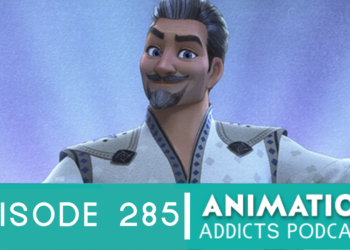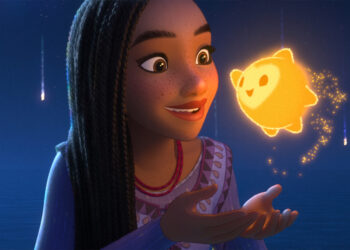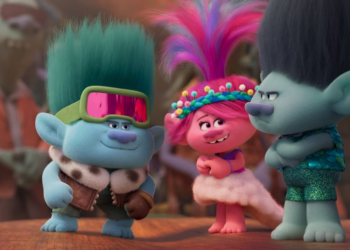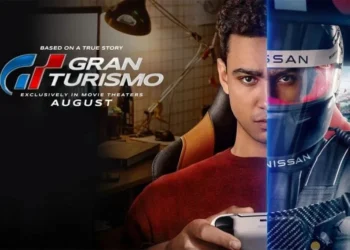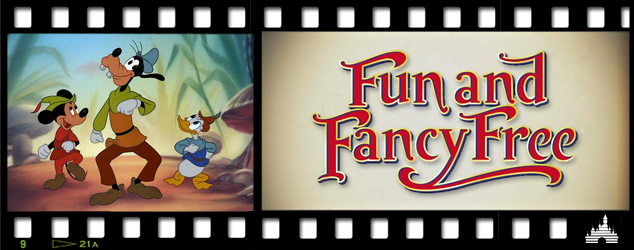
My first run in with the Disney film Fun and Fancy Free was during my preschool days. I remember sitting on the couch in my living room and watching Mickey and the Beanstalk as an individual TV episode on a Saturday morning. I wasn’t aware of the film the short originated from until years later. If I wasn’t such a big fan of animated movies, I probably never would have watched Fun and Fancy Free, simply because I never would have known of the film’s existence in the first place. Such is the fate of the majority of Disney package films released in the 1940s.
Fun and Fancy Free consists of two animated short films: Bongo—a segment adapted from Sinclair Lewis’ “Little Bear Bongo”—and Mickey and the Beanstalk—an adaptation of the story of Jack and the Beanstalk staring Mickey Mouse, Donald Duck, and Goofy. The film starts off with a short introduction by none other than the famous conscience of Pinocchio himself, Jiminy Cricket (voiced by the character’s original voice actor, singer Cliff Edwards). Jiminy sings “I’m a Happy-go-Lucky Fellow,” a song originally written for the film Pinocchio, and introduces the film’s first segment, Bongo.
Bongo
Bongo tells the story of the titular character, Bongo the bear, a circus performer who dreams of living freely in the wild. The segment is narrated by actress Dinah Shore.
The segment begins with Bongo escaping the circus and making his way to the forest. Once there, he meets a bear named Lulubelle, whom he immediately falls in love with. However, another bear, the jealous and violent Lumpjaw, competes with Bongo for Lulubelle. Trouble arises when Bongo, being from the circus, fails to realize that slapping one another in the face is considered a sign of love in forest bear “culture.” This creates tension in his relationship with Lulubelle and causes her to turn to Lumpjaw.
Bongo decides to challenge Lumpjaw to a fight in order to win Lulubelle back. During the fight, he and Lumpjaw fall over a waterfall, and Lumpjaw is swept away. Bongo is miraculously saved by his hat, which catches on a hanging branch. The segment ends with his happy reunion with Lulubelle and the other forest bears.
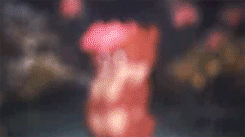
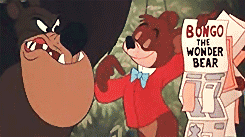
Mickey and the Beanstalk
Of the two shorts that make up this package film, Mickey and the Beanstalk is by far my favorite. After Bongo, it’s nice to return to the familiar characters of Mickey, Donald, and Goofy. This short tells the classic Jack and the Beanstalk tale: after a singing harp (voiced by Anita Gordon) is stolen from her home of Happy Valley by Willie the Giant (Billy Gilbert), three peasants—Mickey, Donald, and Goofy (voiced by Walt Disney, Clarence Nash, and Pinto Clovig respectively)—come to her rescue.
The short begins with Mickey, Donald, and Goofy mourning the fact that their home of Happy Valley is in extreme drought due to the absence of the magical singing harp. After a hungry Donald nearly attacks their cow with an axe, Mickey resigns to selling the cow for food. When he returns, however, he carries not food, but magic beans. The beans sprout into a giant beanstalk, which leads the trio into a land in the clouds. Here they encounter Willie the Giant and are nearly captured. Realizing Willie possesses the stolen harp, Mickey cleverly outwits the giant, saves his friends, and returns the singing harp to Happy Valley.
While I love this classic short, there is one thing I absolutely can’t stand about it: the narration. The short is narrated by actor and comedian Edgar Bergen and his ventriloquist dummies, Charlie McCarthy and Mortimer Snerd. The interjections and questions of Bergen’s dummies throughout the short, as well as those of actress Luana Patten, to whom Bergen is meant to be telling the Mickey and the Beanstalk story, distract from the action of the sequence and significantly slow it down. Later standalone releases of Mickey and the Beanstalk replace Bergen’s narration with that of Disney character Ludwig Von Drake (Paul Frees) or actor Sterling Holloway (who is probably best known for voicing Winnie the Pooh), sans dummies.
Development
Like the majority of Disney’s package films, Fun and Fancy Free came about as a result of World War II. Both Bongo and Mickey and the Beanstalk were originally conceived as individual feature-length films. Early story notes even suggest that Bongo was meant to be a follow up film to Disney’s Dumbo, which was released in 1941. However, following the attack on Pearl Harbor that same year, the U.S. military requested Walt Disney Animation direct its efforts to instructional and propaganda films, and resources for Bongo and Mickey and the Beanstalk (then known as The Legend of Happy Valley) had to be diverted to other projects. In order to complete the two films, Disney combined them into one “packaged” film, which was released September 27, 1947.
Final Thoughts
While Fun and Fancy Free will never enjoy the critical acclaim that many of Walt Disney Animation Studio’s other feature films enjoy, it’s a fun package feature with a lighthearted message that anyone can appreciate. While lack of resources certainly prevented the segments of this film from reaching their full artistic and story potentials, an all star team of supervising animators—Ward Kimball, Art Babbitt, Les Clark, John Lounsbery, Fred Moore, and Wolfgang Reitherman, to name a few—were able to bring them to life in a unique and truly creative way.
Have you seen Fun and Fancy Free? Let us know your thoughts on this film in the comments!
Edited by: Kelly Conley



